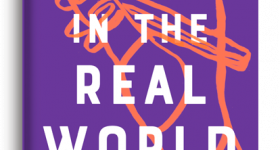In 1944, while working for Blazing Comics, Chu Hing created the Green Turtle, a World War II American superhero who fought together with China against Imperial Japan. Like many American superheroes, Hing's Green Turtle wore a mask to protect his real identity. But unlike these heroes, rumor had it that the mask disguised the Green Turtle as a Chinese American hero.
In The Shadow Hero, writer Gene Luen Yang and illustrator Sonny Liew take the rumor and run with it, creating an origin story of an American-born Chinese boy who grows up to become a superhero. As Yang explains, The Shadow Hero "firmly establish[es] the Green Turtle as the first Asian American superhero."
The Shadow Hero begins in 1911 China, with four spirits worrying over the fate of China as the Ch'ing Dynasty collapses. But in contrast to his brothers--the Dragon, Tiger, and Phoenix, spirits who hope to invent a new China--the Tortoise spirit seeks a new life in America. And here the story of the Green Turtle begins: the Tortoise spirit unites with the body of the future father of our hero, Hank.
The journey of Hank's parents from China to America's Chinatown situates Hank within an American heroic tradition. Hank's father lives a humble but cowed existence, paying the high cost of doing business in Chinatown; meanwhile, Hank's ambitious and disappointed mother seeks ways for her son to break out of this complacent mold. What's her solution to the problem of their meager existence? Their son Hank must become a superhero. Hank's superhero training starts with learning martial arts from the local expert (otherwise known as his mother's former boyfriend). Hank wears a mom-made costume (tights included) and is chauffeured around town by his mother. What could possibly go wrong?
Similar to Yang's other works, The Shadow Hero offers a coming-of-age story for young Hank. As in American Born Chinese, we see how Hank attempts to find his place in an America roiling with injustices but also providing opportunities for success. Through skillful storytelling and integrating history into fiction, Yang gives us a glimpse at the discrimination and optimism found in twentieth century America, depicting a Chinese American community rife with disputes among warring tongs and ineffectual (white) law enforcement attempting to police Chinatown.
Throughout The Shadow Hero, Yang and Liew bring together words and images to project the humorous and modest backstory of how Hank eventually becomes a certifiable Asian American superhero. Thankfully, the "damsel in distress" found in so many superhero tales is not a victim in this origin story. Although she happens to be the daughter of Hank's enemy, Red Center is a martial arts expert who sports her own heroic moves. In one scene, Red Center saves Hank by beating some thugs and hoisting him back into the car (where his mother waits for him, tut-tutting, "So shameful! So shameful"). And there’s another female force to be reckoned with: Hank’s always resourceful mother. In another key moment in the book, Hank fights the bad guys only to be interrupted by his mother, who arrives in a wheelbarrow pushed by the local martial artist/former boyfriend. His mother needs less to be saved than to make sure no one hurts her son during an epic showdown at the resident bad guy's palace. It's hard to become a legendary caped crusader when the women in the story do much of their own saving while also rescuing the supposed superhero.
Hank, a.k.a. the Green Turtle, does eventually become a superhero by gaining a superhuman quality, successfully avenging a wrong upon his family, and trying to win the affections of his sweetheart. He achieves this by embracing the American rule of law. He fights and wins not by killing his enemies, but by sending them to jail. But he also understands that being the Green Turtle is also about being a shadow hero, in possession of a secret identity.
In Secret Identities: The Asian American Superhero Anthology, editor Jeff Yang compiles stories of Asian American superheroes. These stories imagine heroes who may look like "typical Asians," with Clark Kent facades of "nerdiness" that mask their incredible feats of heroism. But those behind the masks are immigrants perceived as perpetual aliens who attempt to find, display, or perform heroism as a path towards self-knowledge and rightful citizenship. The Shadow Hero expands on some of these same themes of Asian American identity, alienation, masculinity, and heroism.
In this comic, Yang and Liew provide a subtle subtext that raises questions about heroism found in the emergence of the first Asian American superhero, a message perhaps most explicitly voiced by Red Center: "Hank, be honest. Do you really think dressing up in that silly costume will make them accept you? Do you really think it will make you a part of them?" The story leaves this question open, but not because Hank seeks to assimilate into an American mainstream. Instead, Hank accepts his role as an American superhero by adding some modern Chinese wisdom into the mix. He takes to heart the Tortoise spirit's guiding principle: "Sometimes, a fight you cannot win is still worth fighting."
***
Jee Yoon Lee teaches at the George Washington University and maintains the blog writinglikeanasian.blogspot.com.









Comments